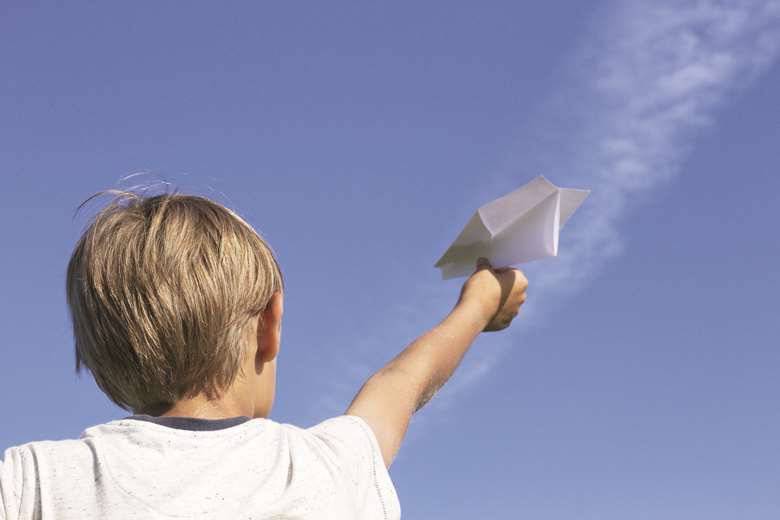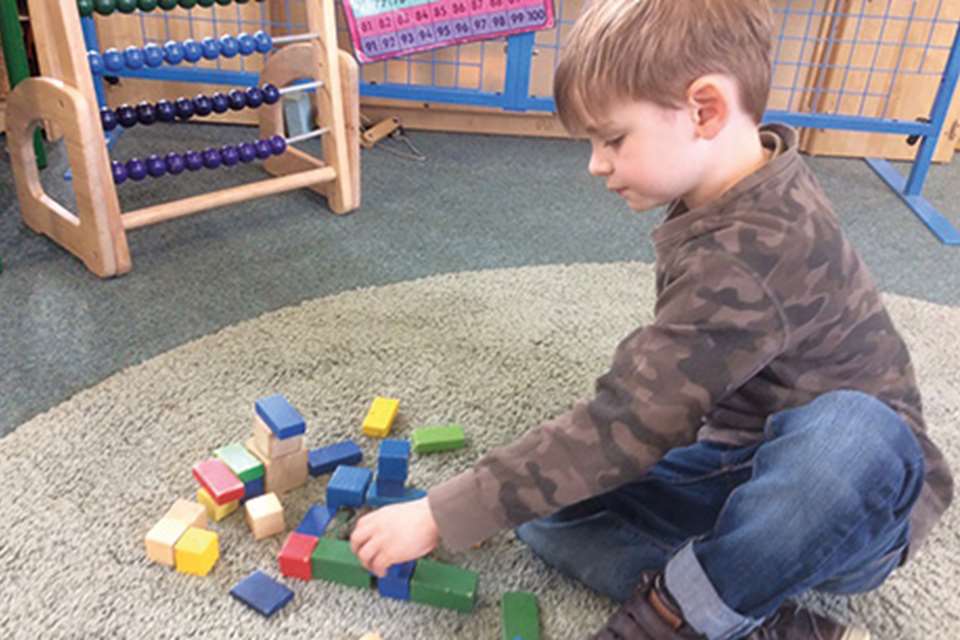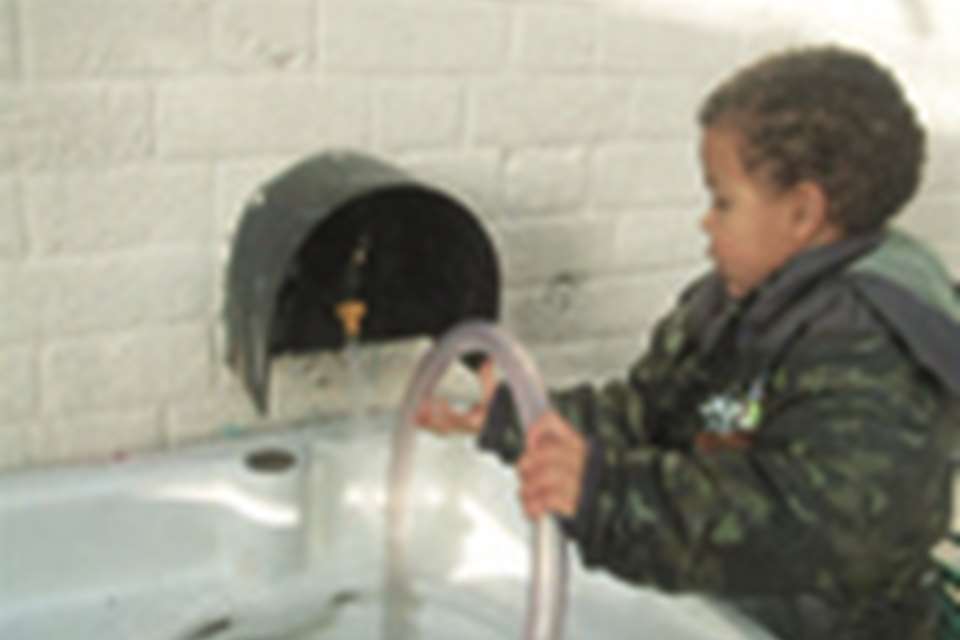Essential Resources: Trajectory Scheme - On the move
Nicole Weinstein
Tuesday, October 26, 2021
In the first in a new series about schemas, Nicole Weinstein looks at the key resources for supporting children with the trajectory scheme

Watching glue drip from a spatula, jumping up and down, flying paper aeroplanes and pouring water into containers are all examples of actions which, if done on a repetitive basis, indicate a child’s interest in the trajectory scheme. This is the action where they are fascinated with the way that objects move through the air and land on the ground.
SCHEMES AND SCHEMAS
But why are we referring to it as a ‘scheme’ rather than a ‘schema’? Many practitioners are familiar with schemas and associate them with patterns of repeated actions or children’s fascinations. But the word ‘schema’ was mistranslated in English versions of Jean Piaget’s books. Lynnette Brock, co-director of community interest company SchemaPlay, says the correct translation is ‘scheme’.
‘You might question whether it matters which word we use, but the two words have distinct meanings, which our European counterparts often pick us up on,’ she says. ‘And because of what we now know about how we learn and recall knowledge, it’s important to understand the difference.’
Schemes refer to operations; the actions and repetitive behaviour that children apply in their free play.
Schemas refer to what we know about and recognise. They are figurative; for example, an image of an object, or the actual object.
Children begin to understand new objects or phenomena by learning what they do or what they can do with them through the repetitive action of schemes. Lynnette explains, ‘We cannot recall a double-decker bus without recalling the image of one (the figurative schema) – an image that is of a vehicle on wheels that rotate, contains people and follows a horizontal trajectory, transporting them from A to B.’
MOVING OBJECTS
Trajectory is one of the earliest schemes to develop, according to Dr John Siraj-Blatchford, co-director of SchemaPlay. ‘By the age of three months, the trajectory scheme is a solid feature in a baby’s life,’ he says. ‘When being picked up and moved around by parents and carers, the child observes objects and people moving around them. This is where the fascination to get moving themselves and to explore how other things move begins.’
Over the next five years, children apply the trajectory scheme in more sophisticated contexts. They begin by throwing things on the floor; waving around spoons and sticks and dropping items into containers, and they go on to draw in straight lines, and begin to think more in terms of trajectories.
‘Children with trajectory schemes are often interested in lines – vertical, and horizontal,’ explains Lynnette.
‘Once the scheme has been observed, we “seed” the environment with resources for children to engage in, so that the trajectory scheme is applied across the whole of the continuous provision: in block play, role play, sand and water play, creative play, etc.
‘This opens up a breadth of learning opportunities to support children to apply their trajectory schemes across the curriculum, which can later be built upon to support new schemes and learning.’
The trajectory scheme may be considered a ‘perquisite for early writing’, Lynnette says, with the horizontal and vertical movements needed to form many letters.
‘Also, early language stems from the schemes we explore,’ she adds. ‘For example, a child with a trajectory scheme is often overheard saying “up”, “down”, “there”, “on top”, “under”, “get” – early prepositional and positional language.’ It can also support perception of quantities, height, length, distance, weight and volume.
Practitioners trained in SchemaPlay learn to understand the prerequisite schemes required to engage in more complex operations such as adding, subtracting and measuring, reading and writing, so that they can always build upon these and extend the child’s learning. ‘Practitioners can set up the most beautiful, aesthetically interesting activity, but if it’s not anchored in something that the child can do, they won’t be able to make sense of it,’ highlights Lynnette.
Children with an interest in trajectory scheme will enjoy:

- jumping, throwing; walking up and down steps or crawling up and down ramps; dancing with scarves
- dropping items; watching mobiles, trees or bubbles move in the breeze
- exploring loose parts; for example, long and short tubes with different sized balls to drop into them
- connecting objects, such as train tracks, or constructing roads for wheeled toys to drive along
- creating water runs
- things that fly in the air – balls, kites and Frisbees – and how they land
- building towers with blocks, or laying blocks out; or objects such as cars or dominos
- spotting crosses andgrids in everyday objects such as cake cooling trays, grills or nets.
Resources to support trajectory

- Treasure baskets for children that can sit unaided, filled with objects and containers for them to be dropped in to. Try Cosy’s Complete Natural Treasure Collection, £216, or its Baby Treasure Basket, £66.99.
- Shape sorters, tubes and balls for infants who enjoy posting objects or items that children can roll, such as tubes or TTS’s Wooden Sparkle Rings, £59.95.
- Natural materials and loose parts in the outdoor environment: children will enjoy putting sticks in long lines or making crosses with them, stacking stones and observing insects moving.
- Water and sand play with different containers to support learning around volume and movement. Early Excellence’s Moving Water Collection, £215, includes tubes, connectors, pipes, funnels, jugs and basters.
- Guttering, such as TTS’s Natural Wooden Water Channelling 8pk, £99.95, is great for experimenting with forces.
- Balls and ramps. Try running toy cars down Cosy’s Mixed Surface Guttering Channels, £38.99, or balls on its Clear Water Ramp, £29.99. Or how about a game of skittles – EE’s Set of Skittles, £24.95?
- Planks, ladders, building blocks, tyres, cable reels and crates enable children to set up obstacle courses. Cosy’s Cable Drum Panacea, £249, and its pack of 18 Tyre Tastic, £103.
- Wheeled push-and-pull toys. Try Early Excellence’s Movement & Mechanism Resource Collection, £95, which includes pull-back vehicles, boats, springs and windmills.
- Plumbing pipes and connecting tubes, such as TTS’s Toddler Marble Run, £59.95, or the Marble Run, £165, from EE.
- Mark-making tools – chalks, pencils, large sheets of paper with paint rollers, brushes and pipettes, collage materials (which enable grids) and marble painting. Try the Outdoor Trundle Wheelie Painters, 4pk, £79.95, from TTS. Or Cosy’s new Tuff Spot Paper Pad, £15.99, with its Big Muscles Outdoor Art Set, £42.
CASE STUDY: Tops Day Nursery, Poole, Dorset

Senior nursery manager Simon Evans is one of a team of 20 SchemaPlay licensed trainers at Tops Day Nurseries, which is rolling out SchemaPlay training to its 600 staff members across 32 sites. He has been in childcare for 14 years and says that this method is ‘by far’ the best way to observe how children are progressing and to ‘seed’ or extend their learning by adding more resources into the environment.
‘Four-year-old Jake’s [name changed] trajectory scheme was first picked up when I observed him building towers and knocking them down, repeating the action for almost 20 minutes. I considered how I could “seed” resources across the continuous provision and breadth of curriculum to enable Jake to develop further competencies,’ Evans says.
‘I seeded guttering and jugs outside, next to the water-play area; ball runs which I hoped would not only provide exploration of speed and distance but also an understanding of length when constructing it.
‘Indoors, I seeded tubes and balls, bricks, Duplo, natural bricks and sand sieves, scarves for dance, large rollers for painting, and stories, such as Nick Inkpen’s Blue Balloon and Jack and the Beanstalk, which has trajectory schemes in the storyline.
‘Jake has really taken to the tubes offered in the sand-play area and his language suggests that he is particularly fascinated with how the sand travels down through the tubes – sometimes fast and sometimes slow.
‘I decided to respond to this observation by adding different sized buckets, ladles and a water wheel to the sand- and water-play areas to enable transferring/transporting and containing, as well as pouring and observing the water and sand travel (trajectory). Opening up opportunities to develop new scheme applications will support Jake’s learning and development through exploratory free-flow play further, and eventually support his application of combining schemes together.’
FURTHER INFORMATION
Download Now







